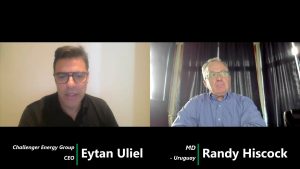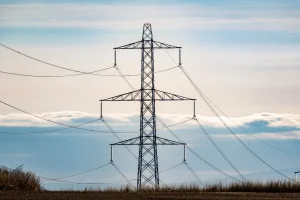Diversified Energy Company plc (LON:DEC) Chief Executive Officer Neil Johnson caught up with DirectorsTalk for an exclusive interview to discuss the East Texas deal, deal metrics, importance of location, potential synergies, natural gas outlook, the undeveloped acreage, and the New York stock listing.
Q1: Rusty, I know you’re always on the lookout for accretive deals at attractive values, can you talk about how the deal came about and if the current US M&A landscape in energy would provide additional opportunities, do you think?
A1: This deal was what I would consider to be a bold one. It was in Diversified Energy Company’s existing operating areas there in East Texas, Cotton Valley Assets, which is, as we’ve said over and over, is a very, very important part of our business, having access to natural gas in that Gulf Coast region. Very important to us because it gives you exposure to the US LNG export facilities along the Gulf Coast.
So, this was an asset that was right in our existing operations. It was an attractive valuation, has a lot of synergy opportunities for us since it’s geographically concentrated with the rest of our assets, and it has some potential upside in deep rights that we can look into also.
So, all in all, very, what I would call, cookie cutter deal for us, but very strategic from that sense also.
Q2: Can you tell us more about the specific deal metrics and how they fit into your acquisition framework?
A2: When we look at deals, it’s got to be accretive, and we look at different types of metrics. We look at a trading multiple, we did this transaction at a 3.8 multiple, it’s less than our trading valuation for our current shareholders so that’s good. It has some upside that we believe that we can get out of the deal from both synergies and upside and potential leasehold sales. So, that gives us some additional accretive value to our shareholders.
We’re buying it at a very attractive discount to its future cash flows at a PV20 and you really look at that compared to your cost of capital in the deal and so it was very, very accretive from that manner also.
I think the one key element that needs to be shown here is that we were able to use, for the first time in our company’s history, our currency, our stock as currency for a transaction. Nobody was really willing to take on the UK listed shares as much in the US just because they don’t know enough about it, the trading liquidity, whatever. But in the US, we now have this US listing, we now have the ability to issue shares that can be traded on the New York Stock Exchange and so for the first time ever, it’s giving us an advantage of being able to use our own stock as currency also.
Q3: How much does location play into any of your thoughts?
A3: Location of the assets, for sure, always plays into it. We want to make sure that we can not only buy a deal on the attractive side, but also have the ability to garner some efficiencies and synergies on the backside of the deal, which is upside exposure that we didn’t pay for.
So, it’s always a very key element but it’s not the only element. We don’t mind looking outside of our existing operating areas if it’s the right deal. For sure, in this case, it was a very important element.
Q4: You touched earlier on potential synergies, can you tell us more about that and the cost savings or improvement in production using your smarter asset management approach?
A4: It’s key to everything we do.
When you turn these assets into our operating structure and into our operating personnel, you look at, okay, can we operate these wells with fewer people than they had? Can we combine compression? Can we move their gas on some of our pipelines? Can we take out some of the compression costs and water hauling costs and all the other things that we already have in our existing operation?
We want to apply those across that asset base and when we do, it typically has pretty substantial savings.
Q5: Is there any hedge book being acquired, and what is your current view on the outlook for natural gas?
A5: So, this asset does not have any hedging in place. We obviously will put some in place, especially in 2025 and 2026.
We’ll put on percentage, we like some of the gas to be unexposed right now to hedging because we do believe that the forward curve is going to have some upside as we move forward.
Everything right now hinges on weather. We have a substantial storage in place as we come into the fall and get closer to the winter months, it’s all going to be predicated, where does the price go based on the winter? We’ve had three winters in a row with really not very strong winters, they’ve been pretty mild. The chances of that happening for a fourth consecutive year, I guess, is, what’s those chances?
So, we believe coming into the fall that if we get any indications of cold weather coming, that prices will pop and so having some unhedged amount of gas is a positive thing for us at this point.
Q6: Now, you mentioned the undeveloped acreage in the announcement. Is there any of the deal consideration allocated to that? What are the opportunities to extract value from it, either by drilling or outright sale?
A6: We put no value on that in the purchase price and so it’s all upside. Whatever value we get out of that, whether it be teaming with somebody who wants to drill it in a joint venture program or selling the acreage outright to someone, which is always a possibility, we’ve done that in the past, whichever one it is, the value that’s created is purely upside to our existing investors.
Q7: Do you have any other corporate updates to provide, particularly around the New York stock listing?
A7: That’s a great question. We did that in December and it’s had tremendous, tremendous results. Diversified Energy Company have been marketing heavily in the US, we entered the Russell 2000 index at the end of June, we met those qualifications and were added at the end of June.
So, that was a big step for us, getting more liquidity around the index trading that comes within the US markets. We do believe that there has been a substantial number of shares transfer from the UK into the US just through trading and really, the US trading now represents, we’ve never issued a share in the US yet, but it represents over 50% of our daily trading volume.
It just goes to show you, to some degree, the power and the dynamics of the US market and so as we issue these shares to our seller, as they trade those out, they’re going to trade them out into US institutional holders, which will then just create even that much more trading dynamics in the US, which then will also hopefully translate into a better trading valuation for the stock.












































